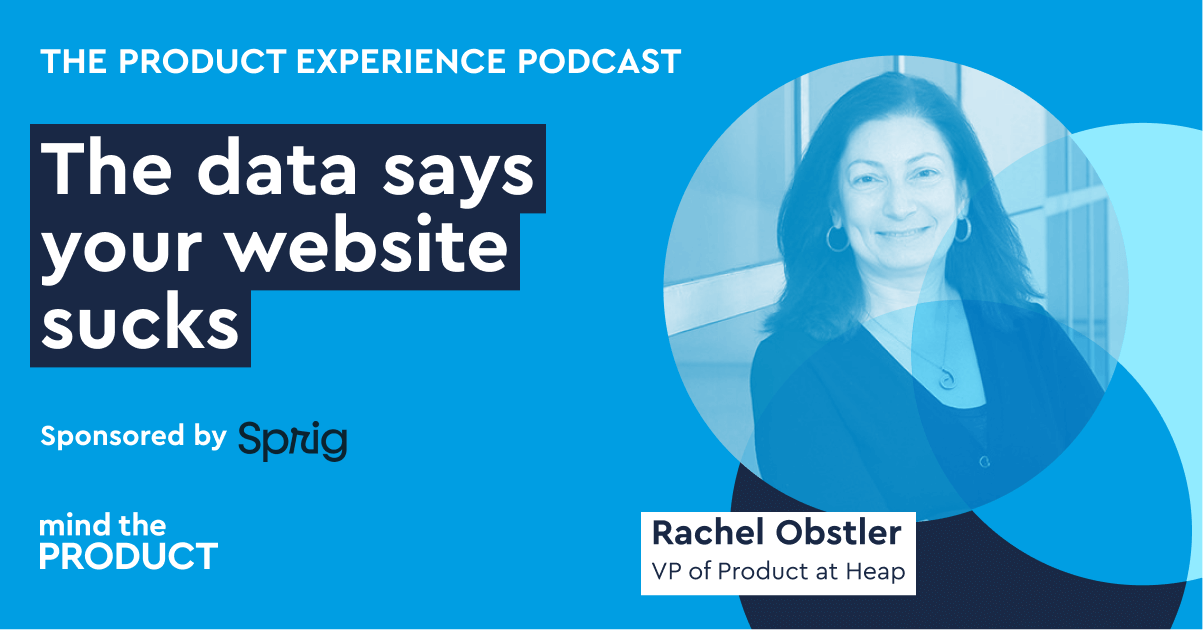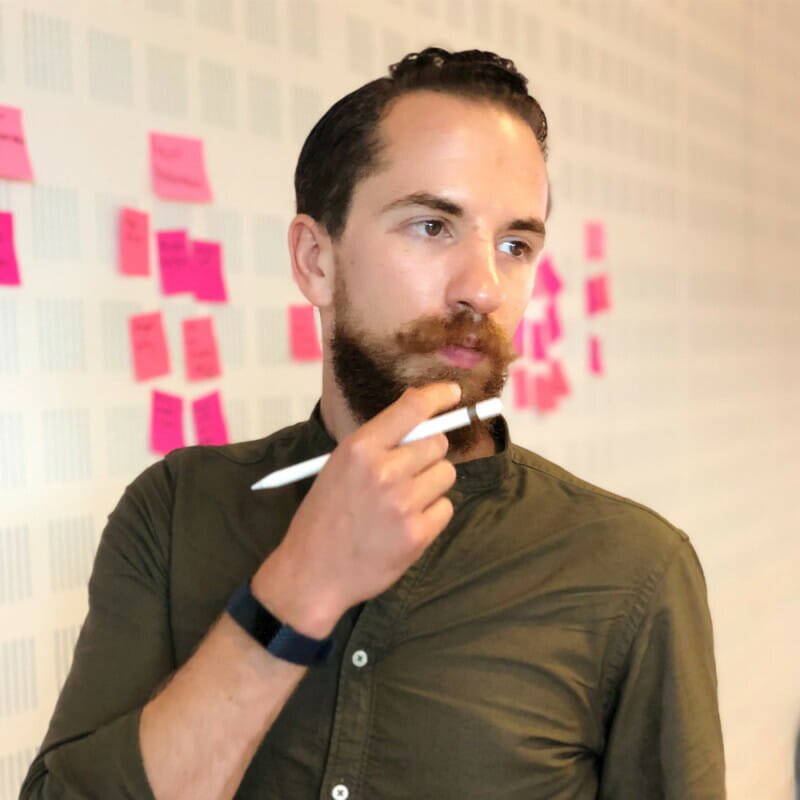In this talk at ProductTank Cardiff, Tendayi Viki draws on ideas from his latest book – Pirates in the Navy – to share a rich set of tools for product leaders who are trying to balance the needs of exploration, innovation, and execution. Ultimately, it boils down to developing a pragmatic model for managing risks and investments, and a shift in mindset to reframe “disruptors” as “explorers” (rather than “pirates”).
Pirate v.s. Privateer
To start with, Tendayi encourages us to reframe teams focused on innovation, and to think about them as privateers rather than pirates. While their disruptive activities are largely the same, privateers have a much higher degree of institutional buy-in, support, and outcome endorsement. What’s particularly interesting about the successful privateers of history is that they often ended up being explorers, sanctioned by the state to discover new lands and resources. The mindset that comes with being an explorer, is the key thing to consider when we’re balancing innovation and execution.
Exploring v.s. Exploiting / Executing
The key differences between being a privateer and being in a navy boil down to questions of:
- Focus & objectives
- Degrees of operational uncertainty
- Financial & resource philosophy
- Culture and processes
- Key people and skills
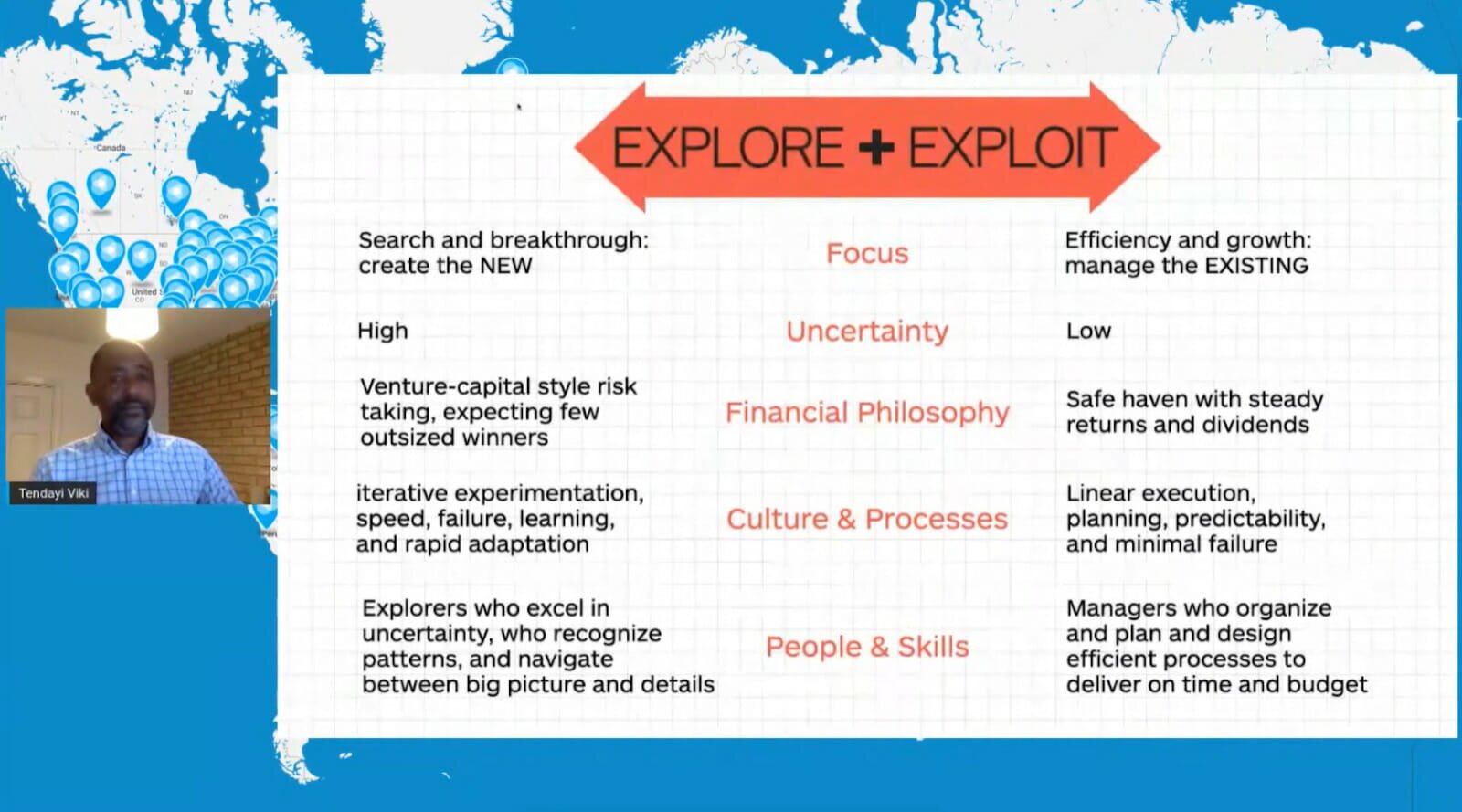
Understanding these distinctions, and being able to model and balance them, is what leads to powerful innovation within larger organisations. Building on that, Tendayi touches on Alex Osterwalder’s portfolio maps as a way to track product investments – balancing returns against risk of disruption, and expected return against innovation risk.
Recognise Innovation Risk
One of the most common challenges in larger organisations is that – regardless of whether you’re managing exploration or execution – once an idea has entered the product portfolio, it is really hard to get that idea out of the portfolio. This is partially down to inertia, and partly because individuals tend to be emotionally invested in ideas they’ve previously supported, regardless of what stage that idea is in.
In the case of execution, ideas in the portfolio tend to be fairly rationally managed according to ROI and well-understood risks. However, most organisations don’t adjust their thinking to deal with innovation risk when they’re dealing with explorer ideas – the risk that there is no market, or that the technology is not feasible, etc. Tendayi describes this as The Tunnel – once an idea enters the portfolio, regardless of confidence or risk, it continues right to the end, rather than being pruned out early.
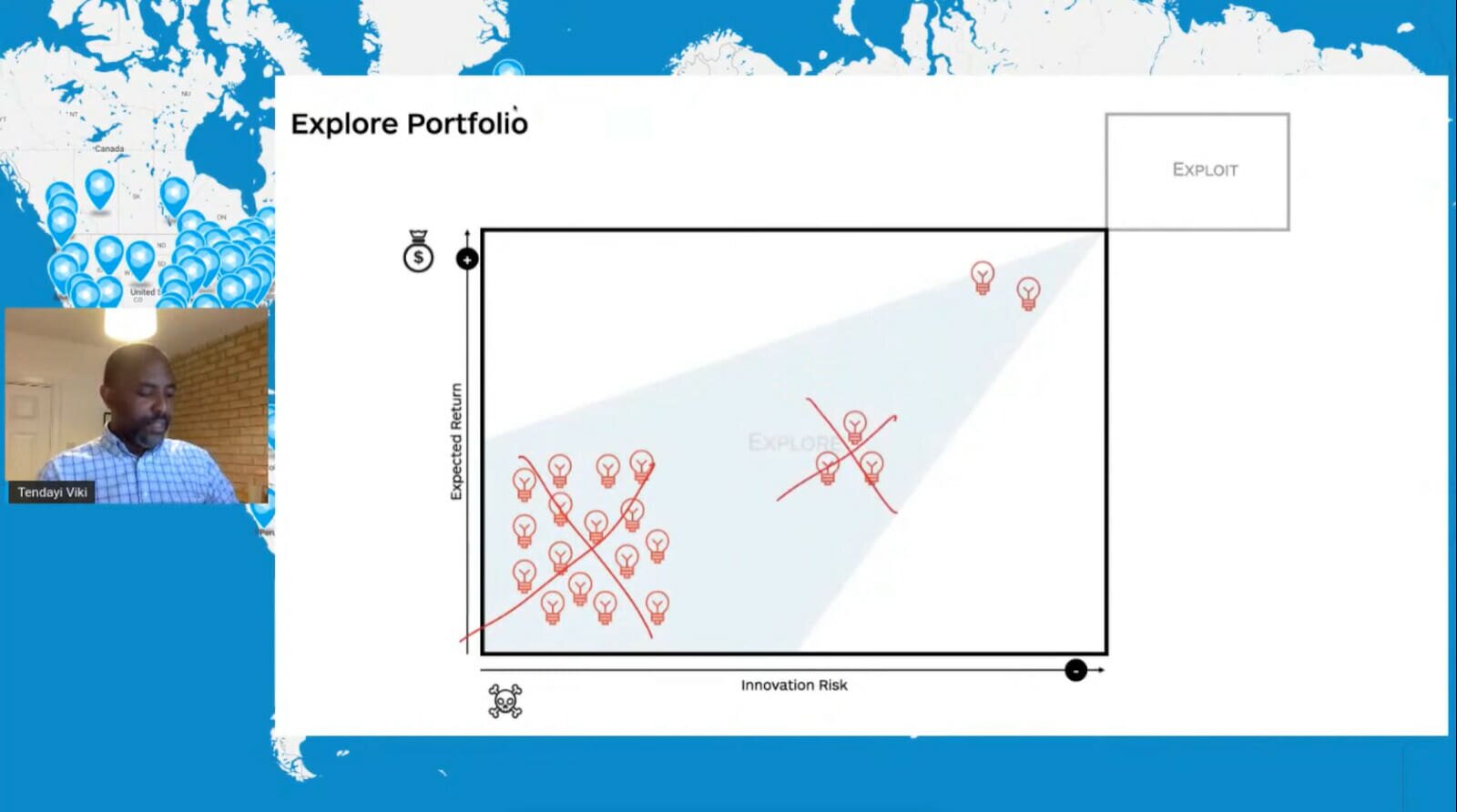
A better way to think about these potential innovations is as a funnel – that for an idea to progress forward, and get continued investment, it should demonstrate either an increase in potential return or, ideally, a reduction in innovation risk. And the ideas that manage to progress all the way through the funnel are the ones that should be moved into the execute / exploit portfolio.
A Shift in Mindset
You should anticipate, from the beginning, that you’re going to have to kill off some of your ideas. In product, there is sometimes a cultural assumption that we can start an idea, and then pivot our way to success. A willingness to pivot is crucial, but it is equally as important to be willing to discard an idea that is showing no signs of potential success.
That being the case, a powerful question to consider is this:
How many exploration projects is it likely to take to discover one “mega success”?
The answer is “a lot”, depending on your definition of “mega success”. The reality is that you don’t know, at the outset, which ideas will be successful, and which will turn out to be risky. Instead, you should be ready to test ideas rapidly & with minimal investment, and learn which ideas are most viable. As a leader, your responsibility is not to pick winning ideas, but rather to create the conditions in which winning ideas can emerge.
Managing and Metering Your Investments
When teams ask for investment, we think we’re investing in execution. We’re not – we’re often investing to discover if an idea will work or not. So the question to ask is “How much would I pay for information?” And, to understand the information you’re looking for, consider what successful innovation looks like – a combination of customer value, a viable business model, and the ability to execute!
As an idea moves through being explored and validated, your team is actually reducing innovation risk, and increasing confidence that an idea can be scaled up and exploited. As teams reduce the innovation risk of ideas, investments in those ideas can start to increase. Start with small bets in risky ideas, and then commit more resources to ideas that show signs of being successful.
Leading innovation is about developing a sense of how much risk is in an idea. Use evidence that the team is giving you. And then decide how much investment that idea should receive.
Asking the Right Questions at Each Stage
Being able to gauge the success of a team is dependent on giving them the right resources, but also on asking the right questions. When a team is first setting out to explore an idea, asking about ROI in five years is meaningless! A useful framework for this is to scale your questions along with your investments, recognising that this is not a linear process.
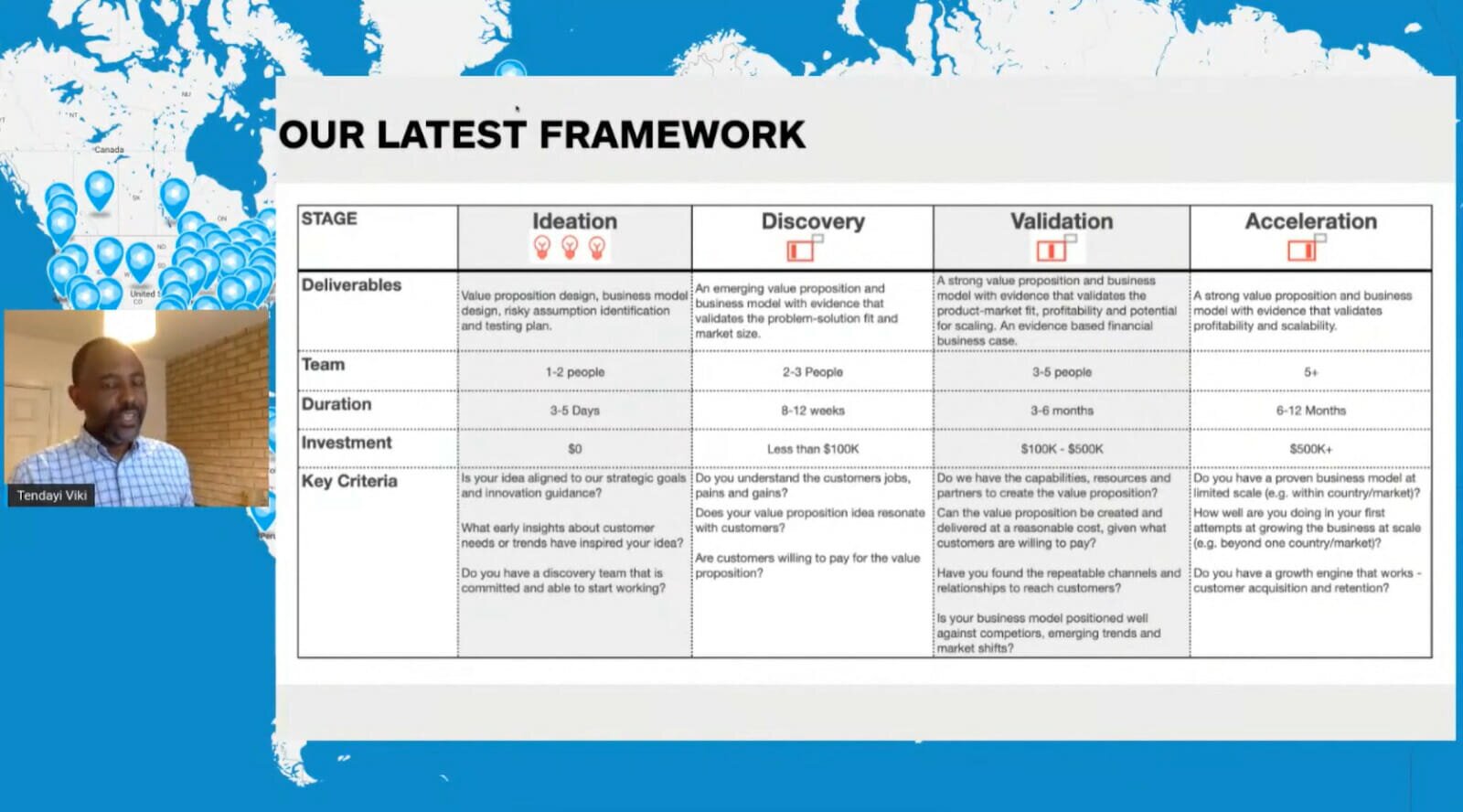
Teams will often find themselves validating factors and reducing risk “out of order” in response to shifts in the outside world. This is absolutely normal, because a map is not the territory, but it’s always important to come back to these fundamental questions to ensure that you can connect the dots and understand why an idea appears to be successful.
Tendayi highlights that the questions you need to be asking explorers need to be specifically crafted – you’re trying to discover completely unknown territory, and ensure that your team is setting off to explore with the right mindset and preparations!
Your role as a leader is to help coach your teams to develop the explorer’s mindset – to create the conditions in which winning ideas can emerge. Make small bets, empower your teams to go out into the world to discover what works, and then to invest in the ideas with low innovation risk, and a high confidence of good returns.



